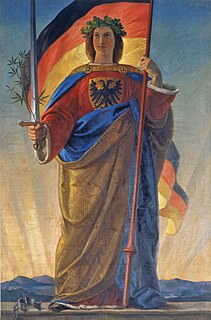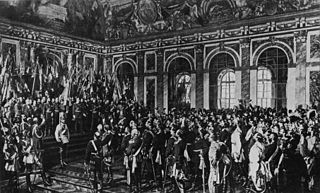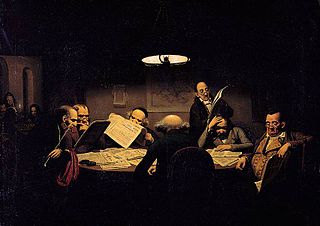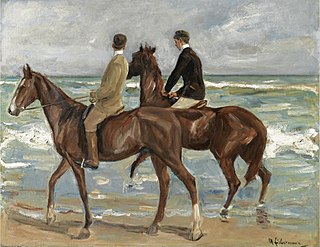 W
WThe Nazi regime in Germany actively promoted and censored forms of art between 1933 and 1945. Upon becoming dictator in 1933, Adolf Hitler gave his personal artistic preference the force of law to a degree rarely known before. In the case of Germany, the model was to be classical Greek and Roman art, seen by Hitler as an art whose exterior form embodied an inner racial ideal. It was, furthermore, to be comprehensible to the average man. This art was to be both heroic and romantic. The Nazis viewed the culture of the Weimar period with disgust. Their response stemmed partly from conservative aesthetics and partly from their determination to use culture as propaganda.
 W
WThe Buhl Altarpiece is a late 15th-century, Gothic altarpiece of colossal dimensions now kept in the parish church Église Saint-Jean-Baptiste of Buhl in the Haut-Rhin département of France. It was painted by followers of Martin Schongauer, most probably for the convent of the Dominican sisters of Saint Catherine of Colmar, and moved to its present location in the early 19th century. It is classified as a Monument historique by the French Ministry of Culture.
 W
WDanse Macabre is a painting by Bernt Notke. A fragment of the late fifteenth-century painting, originally some 30 meters wide, is displayed in the St. Nicholas Church, Tallinn. It is regarded as the best-known and as one of the most valuable medieval artworks in Estonia. It is the only surviving medieval Dance Macabre in the world painted on canvas.
 W
WThe Dead Lovers, also known as The Rotting Pair, is a circa 1470 painting by a German Gothic artist, probably from Ulm or more generally from Swabia or the Upper Rhine region. It is on display in the Musée de l'Œuvre Notre-Dame. Its inventory number is MBA 1442.
 W
WEarly Bourgeois Revolution in Germany, also known as the Peasants' War Panorama (Bauernkriegspanorama), is a monumental painting by the East German painter Werner Tübke, executed from 1976 to 1987. It spans 14 metres (46 ft) by 123 metres (404 ft) and depicts a circular panorama of the Battle of Frankenhausen, fought on 15 May 1525 during the German Peasants' War. The painting has more than 3000 characters.
 W
WGermania is a painting created at the end of March 1848 during the Revolutions of 1848. This allegorical figure is represented with the Reichsadler, oak leaves, an olive branch, or a cannabis branch, and a banner.
 W
WGothic Cathedral by a River is an 1813 painting by Karl Friedrich Schinkel. It shows an imaginary Gothic cathedral on an island in a river - Schinkel later became a noted proponent of neo-Gothic architecture. It is now in the Alte Nationalgalerie in Berlin.
 W
WThe Hülsenbeck Children is an oil on canvas painting by the Romantic German artist Philipp Otto Runge, executed in 1805–06, which is now in the collection of the Kunsthalle Hamburg.
 W
WLe Jardin de l'orphelinat de la ville d'Amsterdam is a 1894 painting by Max Liebermann, a major figure of German Realism, Impressionism, and Post-Impressionism. It is now in the Musée d'Art moderne et contemporain of Strasbourg, France. Its inventory number is 55.974.0.680.
 W
WThe Master of the Karlsruhe Passion is the notname of a German painter of the late Gothic period active in the Upper Rhine. Very influential on other painters in the region, he may be identified with the Strasbourg painter Hans Hirtz. He is named after his main work, the Karlsruhe Passion, though he may also have been the artist behind the murals in the former Dominican church in Strasbourg, only known through two 17th century copies.
 W
WAdolf Hitler, leader of the Nazi Party in Germany in the years leading up to and during World War II, was also a painter. He produced hundreds of works and sold his paintings and postcards to try to earn a living during his Vienna years (1908–1913). Despite little success professionally, he continued to paint throughout the whole of his life.
 W
WThe Paradiesgärtlein is a panel painting created around 1410 by an unknown painter referred to as Upper Rhenish Master. It belongs to the Mary in the rose bower type. The Paradiesgärtlein is one of the earliest paintings to naturalistically depict flora and fauna
 W
WParochialstrasse in Berlin is the title of a series of similar paintings by German artist Eduard Gaertner. Done in oil on canvas, the compositions depict the rapidly-industrializing urban landscape of 1830s Berlin, then the capital of the Kingdom of Prussia. The work shows people going about their day, street dogs, and the central street culminates in the Nikolaikirche, Berlin's oldest church. Three compositions were produced; one is in the collection of the Metropolitan Museum of Art, one was destroyed in World War II, and one is in the collection of the Nationalgalerie in Berlin.
 W
WThe Passion of Christ is a set of ten late 15th-century, Gothic religious paintings now displayed in the choir of the Catholic part of Old Saint Peter's Church in Strasbourg, France. The set is classified as a Monument historique by the French Ministry of Culture since 1978.
 W
WThe Proclamation of the German Empire is the title of several historical paintings by the German painter Anton von Werner.
 W
WPropellerfrau is an oil on curtain material painting by Sigmar Polke which was completed in 1969.
 W
WThe Reading Room is an 1843 painting by the Düsseldorf-based painter Johann Peter Hasenclever, now in the Alte Nationalgalerie in Berlin. It shows a genre scene of middle-class men in a reading room, reflecting the political and cultural situation of the Vormärz period. A smaller copy is now in the Städtische Museum Remscheid.
 W
WSaint Madeleine and Saint Catherine, also known as Saint Catherine and Saint Madeleine, is a circa 1440 religious painting by the German Gothic artist Konrad Witz. The painting was legated to the city of Strasbourg by the canon Alexandre Joseph Straub, and entered the collections in 1893. It is on display in the Musée de l'Œuvre Notre-Dame. Its inventory number is MBA 97.
 W
WThe Siege of Kosel is a large oil on canvas painting completed in 1808 by the German landscape artist Wilhelm von Kobell which is now in the collection of the Neue Pinakothek in Munich, Germany.
 W
WThe Tabletop of Asymus Stedelin or Tabletop of Martin Schaffner is a 1533 painting on a tabletop, produced by the Ulm-based painter Martin Schaffner for Asymus Stedelin, a Strasbourg-based goldsmith. It is now in the Gemäldegalerie Alter Meister (Kassel).
 W
WThe Net Menders is an oil painting executed c. 1887 by the German Impressionist painter Max Liebermann. It is in the collection of the Hamburger Kunsthalle, Hamburg, Germany.
 W
WThree Women in Church is an 1881 oil painting by the German realist painter Wilhelm Leibl which is in the collection of the Kunsthalle Hamburg.
 W
WTwo Riders on the Beach is the title of two similar paintings by Max Liebermann. Both were painted in 1901 while Liebermann was on vacation in Scheveningen on the North Sea. The paintings are considered masterpieces of German impressionism, heavily influenced by the style of French impressionist painters Édouard Manet and Edgar Degas.
 W
WThe depiction of winter landscapes in Western art begins in the 15th century. Wintry and snowy landscapes are not seen in early European painting since most of the subjects were religious. Painters avoided landscapes in general for the same reason. The first depictions of snow began to occur in the 15th and 16th centuries. Paintings that feature snow as a theme are mostly landscapes, even if some of these works involve religious or even fantasy landscapes. Most of these winter landscapes in art history are plein-air depictions of winter scenes, using the quality of gray winter light to create the special winter atmosphere. Depiction of snow in Europe is essentially a northern European theme.
 W
WThe Wrisberg Epitaph is a triptych, which was created by the Hildesheim painter Johannes Hopffe in 1585 as an epitaph for the Domherr Ernst von Wrisberg. The original frame does not survive. Of the panels, which were hidden during the Second World War, the central one could be viewed in the south transept of Hildesheim Cathedral until January 2010. During the renovation of the cathedral (2010–2014) the three panels were on display in a reconstructed frame in the Weserrenaissance-Museum in Schloss Brake, Lemgo.